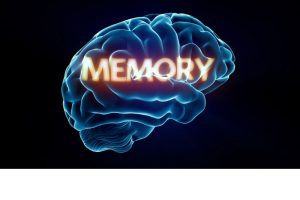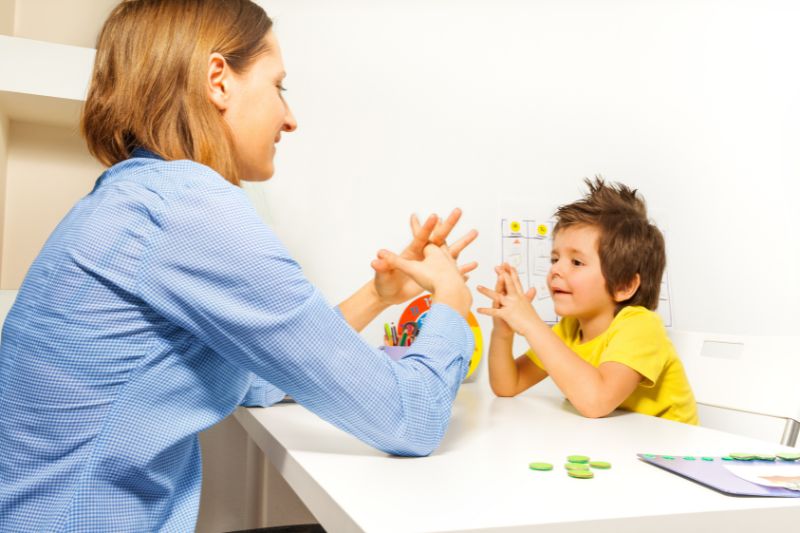How to Improve the ADHD Brain’s Working Memory
 Working memory is an essential aspect of executive functioning and is challenging for many kids and adults with ADHD. Working memory allows us to hold several things in our thoughts at once and do something with them. It is also fundamentally linked to emotional control: when we perceive a thought, behavior, interaction, or activity as important and meaningful, it gets transferred into longer-term memory. This is how we draw on past experiences to apply ideas and solutions for current or future situations. Without it, people wouldn’t recall things from even a few moments ago. It’s really important to understand that working memory challenges, along with processing speed issues, can be a natural part of having ADHD. They don’t cause ADHD; they come with it. Fortunately, there are several strategies kids and adults with ADHD can use to improve their working memory. Sign-up for my newsletter + Free Handout | Ask Dr. Saline
Working memory is an essential aspect of executive functioning and is challenging for many kids and adults with ADHD. Working memory allows us to hold several things in our thoughts at once and do something with them. It is also fundamentally linked to emotional control: when we perceive a thought, behavior, interaction, or activity as important and meaningful, it gets transferred into longer-term memory. This is how we draw on past experiences to apply ideas and solutions for current or future situations. Without it, people wouldn’t recall things from even a few moments ago. It’s really important to understand that working memory challenges, along with processing speed issues, can be a natural part of having ADHD. They don’t cause ADHD; they come with it. Fortunately, there are several strategies kids and adults with ADHD can use to improve their working memory. Sign-up for my newsletter + Free Handout | Ask Dr. Saline
Three Types of Memory
 There are three different types of memory:
There are three different types of memory:
- Short-term memory
- Working memory
- Long-term memory
It’s generally believed that short-term memory is super quick: it stores information briefly, just long enough to use the retained information, and then quickly forgets it (like a temporary verification code). Working memory allows us to process information without losing track of other tasks we’re performing. It is related to short-term memory but it lasts slightly longer and is involved in the manipulation of information. Working memory allows us to retain someone’s name throughout a conversation or follow a set of directions. Long-term memory involves the storage and recall of information over a long period of time (days, weeks, years). Your childhood memories, favorite songs, and the faces of loved ones are all processed through long-term memory.
Working Memory and ADHD
Kids and adults with ADHD often experience working memory challenges which contribute to challenges with executive functioning and emotional control. These issues manifest and become problematic if you need to commit something to memory and act upon that information but struggle with how. Or, if you are overwhelmed by big feelings and stimulation in a social situation, you may say or do something impulsively without recalling what you did previously that worked.  For example, let’s say that your teacher asks you to collect your classmates’ journals, alphabetize them by last name, and place them on top of his desk. By the time you’ve gathered all the journals, you’ve forgotten the next step. Or, you vaguely remember you’re supposed to sort the journals but can’t remember whether to sort by first or last name. With this roadblock, you are not able to complete the task without getting help. A similar situation could arise at work too. Perhaps you are asked to summarize the meeting as it wraps up but you stumble with recalling and articulating what’s occurred. When your brain flags something as emotionally important, it’s transferred down the memory line and converted into long-term memory. This is why emotions and working memory are so intricately related. Short-term, immediate memory for simple tasks gets processed first. Information that is more complex and demanding goes into working memory. If it’s tagged with emotional importance or special relevance, it ends in long-term memory. It’s a very complicated process.
For example, let’s say that your teacher asks you to collect your classmates’ journals, alphabetize them by last name, and place them on top of his desk. By the time you’ve gathered all the journals, you’ve forgotten the next step. Or, you vaguely remember you’re supposed to sort the journals but can’t remember whether to sort by first or last name. With this roadblock, you are not able to complete the task without getting help. A similar situation could arise at work too. Perhaps you are asked to summarize the meeting as it wraps up but you stumble with recalling and articulating what’s occurred. When your brain flags something as emotionally important, it’s transferred down the memory line and converted into long-term memory. This is why emotions and working memory are so intricately related. Short-term, immediate memory for simple tasks gets processed first. Information that is more complex and demanding goes into working memory. If it’s tagged with emotional importance or special relevance, it ends in long-term memory. It’s a very complicated process.
How to Improve Working Memory
Repetition
 Repetition is one of the most effective ways to improve working memory. It even helps to pair an action or movement with a word or phrase. I once had a client who needed to learn Spanish, so he created a special movement for each word to help him remember it. If you’re learning lines for a play or memorizing a presentation, improve retention by reading and practicing right before you go to bed and first thing when you wake up. There are fewer distractions and interruptions on either side of sleep so you’ll have a better chance of remembering things.
Repetition is one of the most effective ways to improve working memory. It even helps to pair an action or movement with a word or phrase. I once had a client who needed to learn Spanish, so he created a special movement for each word to help him remember it. If you’re learning lines for a play or memorizing a presentation, improve retention by reading and practicing right before you go to bed and first thing when you wake up. There are fewer distractions and interruptions on either side of sleep so you’ll have a better chance of remembering things.
If you are giving instructions to a child or teen with ADHD who struggles with working memory, use my rule of three:
- Make eye contact.
- State the direction.
- Have the child repeat the direction back to you twice.
The first time you repeat directions, you ensure that the child heard the instruction correctly. The second repetition sends the direction down the memory line because it is held in the working memory before being restated and then it moves along to long-term memory.
Routines
Using a routine in tandem with repetition can help improve performance as well. Creating routines is another form of repetition that can help with working memory. If you repeat the same set of tasks consistently, you will be less likely to forget one or more of those tasks or related details. This is why morning and evening routines help kids focus on what needs to be done.
Reminders
 There is a difference between giving cues and being a reminder machine. In the first instance, you alert your child or teen and/or yourself to something that needs to occur. In the second, you are telling your kids what to do so they don’t develop any skills or agency. For example, instead of telling them for the millionth time to put their dishes in the sink after breakfast and grab their backpack, refer them to a list of activities for the morning routine on the refrigerator. You can also do this for yourself with useful apps where you record your have-to’s, set alarms or alerts to remind you, and then cross things off the list if you want. Take advantage of checklists, alarms, to-do lists, and reminders to jog your memory (or theirs) in case people lose focus. This will ensure everybody is able to complete a process or set of instructions independently. It will also decrease overwhelm and build self-esteem. When you develop the resources you or your kids need, things can run more smoothly and you all will feel a sense of success.
There is a difference between giving cues and being a reminder machine. In the first instance, you alert your child or teen and/or yourself to something that needs to occur. In the second, you are telling your kids what to do so they don’t develop any skills or agency. For example, instead of telling them for the millionth time to put their dishes in the sink after breakfast and grab their backpack, refer them to a list of activities for the morning routine on the refrigerator. You can also do this for yourself with useful apps where you record your have-to’s, set alarms or alerts to remind you, and then cross things off the list if you want. Take advantage of checklists, alarms, to-do lists, and reminders to jog your memory (or theirs) in case people lose focus. This will ensure everybody is able to complete a process or set of instructions independently. It will also decrease overwhelm and build self-esteem. When you develop the resources you or your kids need, things can run more smoothly and you all will feel a sense of success.
Break it down
Many folks with ADHD struggle to remember complicated tasks. The fewer things you have to remember, the more likely you’ll be to remember them. Break down large projects or lists into smaller parts to reduce the scope of what’s in front of you. When people work on one thing at a time, they reduce the brain fatigue that comes from multitasking. This also allows you to maintain concentration more easily. Then you can get things done and see real progress.
Improve Working Memory by Accepting Your ADHD Brain
It’s important to understand that ADHD brains are unique, not broken or bad. If you or your child experience issues with working memory, focus on equipping yourself with effective tools and strategies to improve your memory instead of paying attention to self-criticism and ‘deficiencies.’  When your child or teen says “I have a bad memory,” reframe their view of how their brain works. Lower amounts of dopamine and norepinephrine in ADHD brains can explain working memory struggles. Describe working memory to your kids (and partners, friends, or colleagues) as the search engine of their brain whose wires need some tweaking. Those adjustments come in the form of reminders, alerts, and alarms. Normalize forgetfulness as something that happens to all people and share your tools for recalling tasks. Be playful: create fun acronyms or zany associations to jog the memory circuitry. Accepting your unique ADHD brain goes a long way toward improving self-esteem and finding working memory solutions which work for YOU.
When your child or teen says “I have a bad memory,” reframe their view of how their brain works. Lower amounts of dopamine and norepinephrine in ADHD brains can explain working memory struggles. Describe working memory to your kids (and partners, friends, or colleagues) as the search engine of their brain whose wires need some tweaking. Those adjustments come in the form of reminders, alerts, and alarms. Normalize forgetfulness as something that happens to all people and share your tools for recalling tasks. Be playful: create fun acronyms or zany associations to jog the memory circuitry. Accepting your unique ADHD brain goes a long way toward improving self-esteem and finding working memory solutions which work for YOU.
